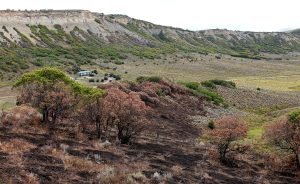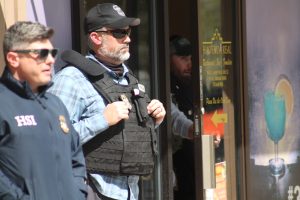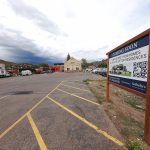Crosho Fire declared fully controlled
No remaining hot spots detected
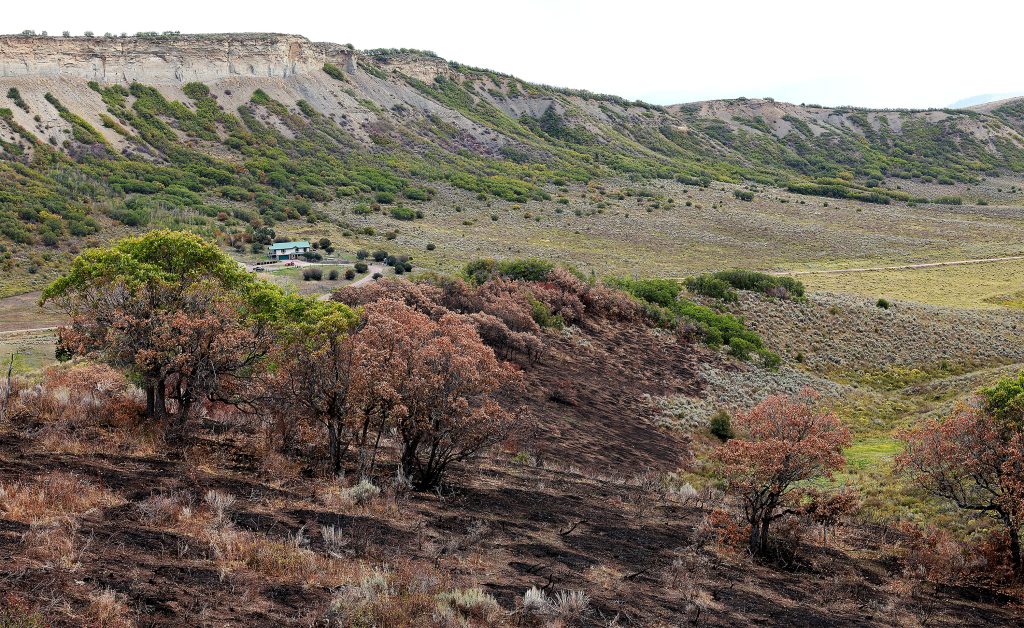
John F. Russell/Steamboat Pilot & Today
The Crosho Fire burn scar no longer showed any hot spots as of Monday, U.S. Forest Service Yampa District Ranger James Statezny reported to Routt County commissioners during a Monday work session.
Although the fire was 100% contained Aug. 26, firefighting officials were still seeing hot spots in the burn scar area through most of September.
“This weekend we did a drone flight over it,” Statezny said during the work session. “We pretty much went around the whole perimeter with some thermal IR technology and didn’t find any hot spots whatsoever.”
While a containment percentage indicates how much of a wildfire’s perimeter has been enclosed to prevent it from spreading, a control percentage indicates how much of a fire has been extinguished and remains a threat, according to the Western Fire Chiefs Association.
Now that the Crosho Fire is 100% controlled, there is little to no chance of hot spots causing dry fuels to catch fire again.
Overnight, the fire grew to around 300 acres. Aerial resources were called in — including a Sky Hammer and two sky cranes — which used water from Crosho Lake and Allen Basin Reservoir for an initial attack.
By the morning of Aug. 13, the fire had exploded to 1,700 acres. Nearly 200 fire personnel — including firefighters from the Forest Service, Steamboat Springs, Oak Creek and Yampa — were on the scene, and two evacuation zones were issued “Go” orders.
On Aug. 26, the fire reached 100% containment at 2,073 acres, with 60% of the fire covering private property north of Crosho Lake.
The Crosho Fire burned at a relatively low intensity, which not only allowed soil nutrients to remain but also helped contribute to controlling the fire sooner.
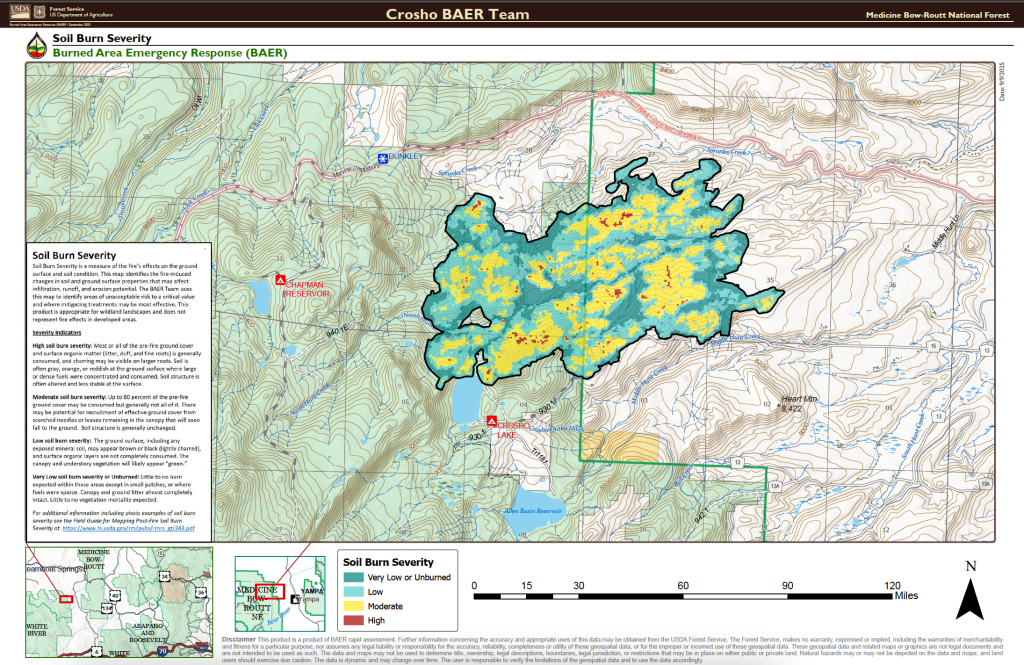
“I was kind of thinking from the get-go that we might not call it ‘out’ until the snow flies,” Statezny said during the work session. “So it’s a pretty great thing that we’re already making that determination.”
A fire intensity map created by the Forest Service’s Burned Area Emergency Response team shows that the Crosho Fire burned with very little intensity, with the majority of the soil indicating low-intensity burns.
Lighter color soil seen on the forest floor after a wildfire indicates spots of high-intensity fire activity, while black soil indicates low- to moderate-intensity fire activity, Statezny said during a Sept. 11 newspaper interview.
After Routt County Commissioner Chair Sonja Macys asked about the cause of the fire, Statezny said the investigation is ongoing, but noted that there had been lightning strikes in the area about 12 days before the fire started.
“We did have a report,” he told county commissioners. “It was about 12 days before (the fire started). We have some cameras that look around, and they showed a little smoke in that area. We went and looked and looked and looked, but couldn’t find anything at the time.”
As of Monday, official cause of the fire remains undetermined, added Statezny.

Support Local Journalism

Support Local Journalism
Readers around Steamboat and Routt County make the Steamboat Pilot & Today’s work possible. Your financial contribution supports our efforts to deliver quality, locally relevant journalism.
Now more than ever, your support is critical to help us keep our community informed about the evolving coronavirus pandemic and the impact it is having locally. Every contribution, however large or small, will make a difference.
Each donation will be used exclusively for the development and creation of increased news coverage.

